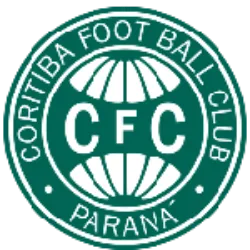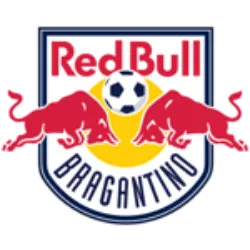Gymnastics has its roots in Ancient Greece and
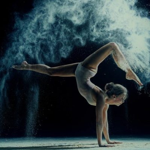
Gymnastics has its roots in Ancient Greece and was seen as an important part of physical education. Modern gymnastics began in the 18th century when Friedrich Ludwig Jahn introduced a new type of gymnastics that focused on physical training and strengthening the body. Gymnastics became an official Olympic sport in 1896 and evolved throughout the 20th century, with new apparatus being added and gymnasts developing new techniques and routines. Today, gymnastics is practiced all over the world and is recognized as a demanding sport that requires strength, flexibility, balance and coordination.
In artistic gymnastics, movements are divided into two categories: longitudinal

In artistic gymnastics, movements are divided into two categories: longitudinal, such as pirouettes, and transversal, such as somersaults. These movements require intense practice to execute perfectly. Some of the best-known movements include opening, plane, carpada, dos Santos, flic-flac, handstand, screw, wheel, round, Rudi, pak jump, saddle, Stützkehre and Tkachev. Each movement demands skill, strength and balance from the athlete.
Test yourself with one of these challenges 👇
Discover some interesting facts about Gymnastics
An artistic gymnastics championship consists of four distinct competitions
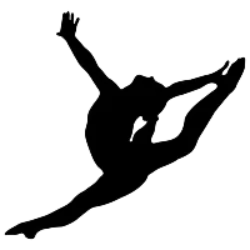
An artistic gymnastics championship consists of four distinct competitions: Qualifying, General Individual Final, Individual Event Final and Team Final. In the Qualifiers, gymnasts seek to qualify for the subsequent finals and determine the positions of the teams and gymnasts. In the Individual General Final, the 24 best gymnasts participate in new series in each event, with the winner determined by the total number of points. In the Final by Event, the eight best-ranked gymnasts in each event perform new series, with the final classification based on the scores obtained in this specific competition. In the Team Final, the eight best teams compete and the scores obtained contribute to the team's final ranking.
The basic uniform in artistic gymnastics consists of a

The basic uniform in artistic gymnastics consists of a Lycra leotard for women and shorts or pants for men, usually accompanied by socks on the feet. During competitions, gymnasts compete barefoot. The use of magnesium powder to prevent slips and injuries is common, especially in bars events. Other accessories include palm protectors and mattresses to cushion falls. Competitions take place in closed spaces, such as gymnasiums and stadiums adapted for specific gymnastics equipment. The modality is divided into men's (MAG) and women's (WAG) artistic gymnastics, each with its own set of equipment and movements. Men's equipment includes floor exercise, table vault, pommel horse, parallel bars, chin-up bar and rings, while women's equipment includes beam, floor exercise, table vault and uneven bars.
The pommel horse
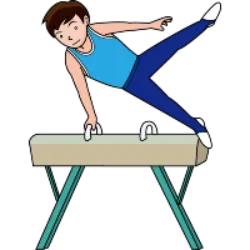
The pommel horse is a men's artistic gymnastics device composed of a narrow body mounted horizontally on a base, with two overlapping handles. Gymnasts perform a series of movements on it, such as circles, scissors and spins, requiring arm strength and leg work. Considered the most difficult among men's devices, it requires balance and posture. To obtain a good grade, it is necessary to execute the movements with precision and avoid deviations from the device during the routine.
The horse used in artistic gymnastics for jumping
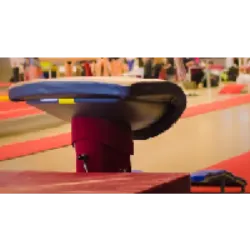
The horse used in artistic gymnastics for jumping was replaced by the table in 2001. The table, also known as the German table, is inclined and provides a larger contact area for the athletes. In vaulting, gymnasts must jump onto the table from a springboard, being evaluated based on the height, difficulty and execution of the movement upon reaching the ground. This event is common in both men's and women's artistic gymnastics and is crucial to the gymnast's final score.
The ground is a piece of equipment contested by men and women
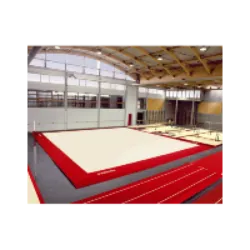
The ground is a piece of equipment contested by men and women. Present since the Paris Games in 1900, it is part of the general competition in artistic gymnastics. Archange Tuccaro, a 16th century Italian acrobat, is considered a pioneer of this practice. Initially little valued, it became an integral part of gymnastics competitions from 1923 onwards. It consists of an area measuring 12m x 12m, where athletes perform a combination of acrobatics, balance and strength, with elements of artistic expression and music in women's competitions. . Scores are based on the difficulty of the movements, artistic expression, execution of required elements, and overall quality of the performance. Penalties are applied for performance errors, such as leaving the designated area or not being in sync with the music. Solo routines last up to 90 seconds and are choreographed with acrobatic and dance elements.
Test yourself with one of these challenges 👇
HOME






